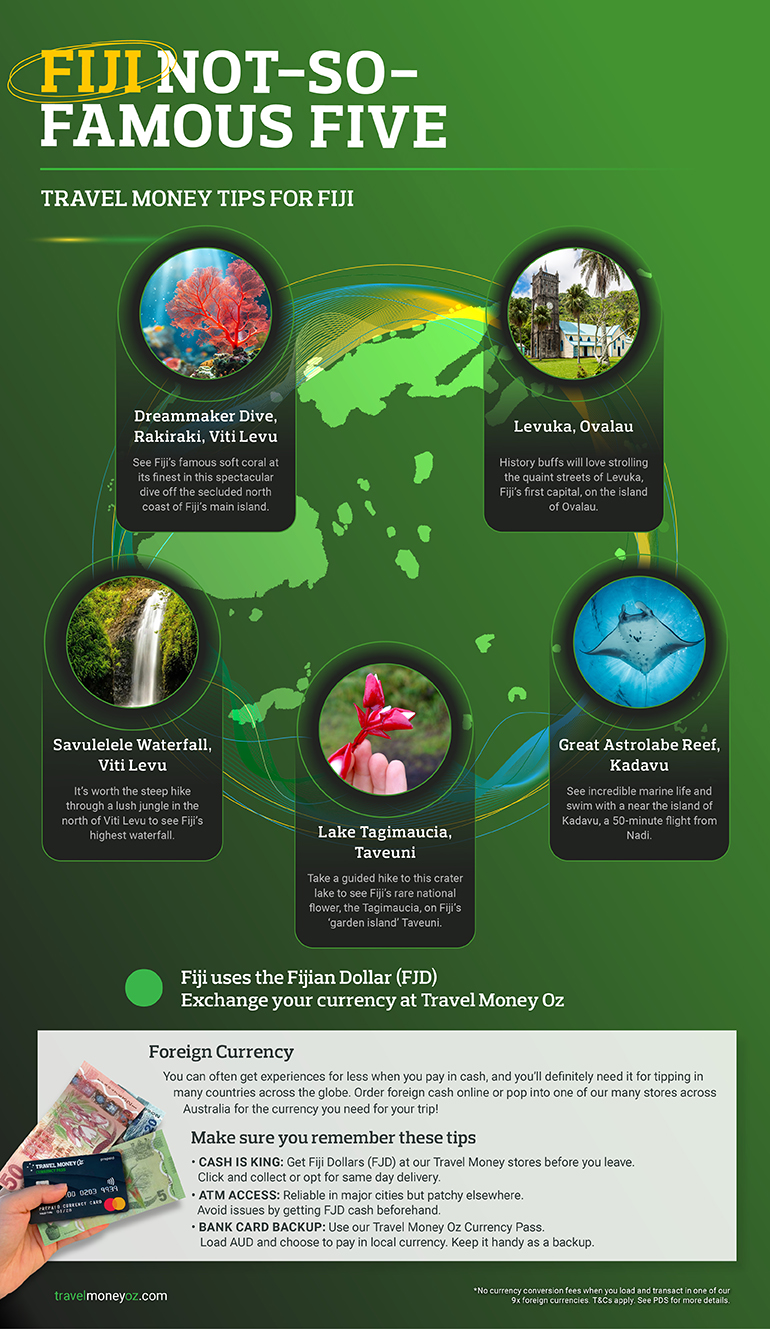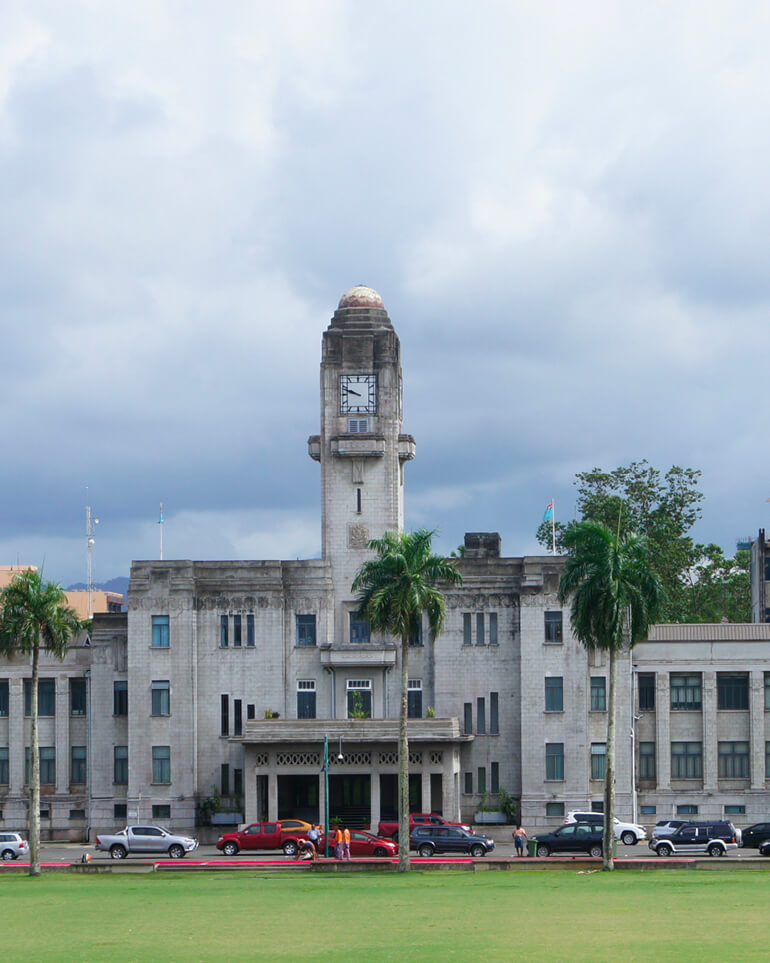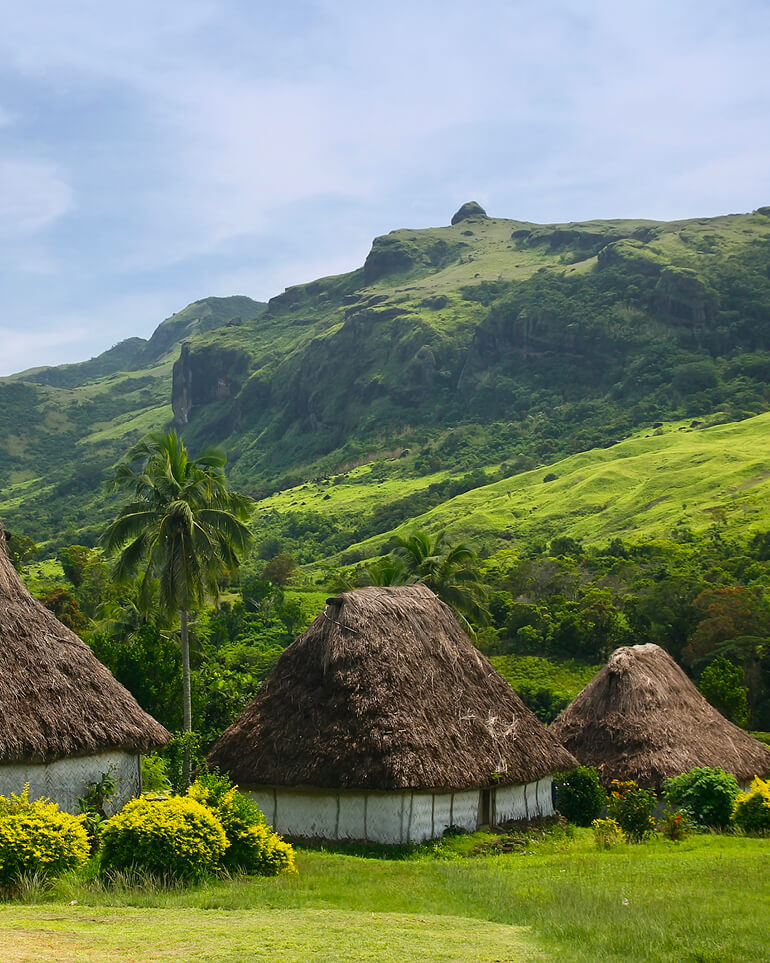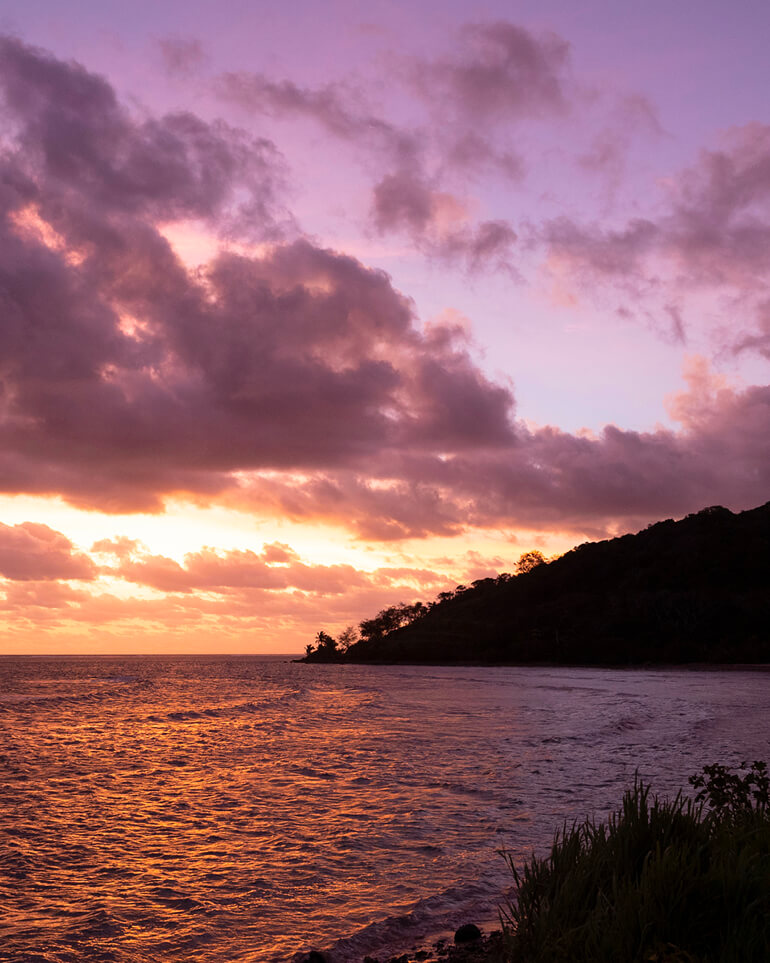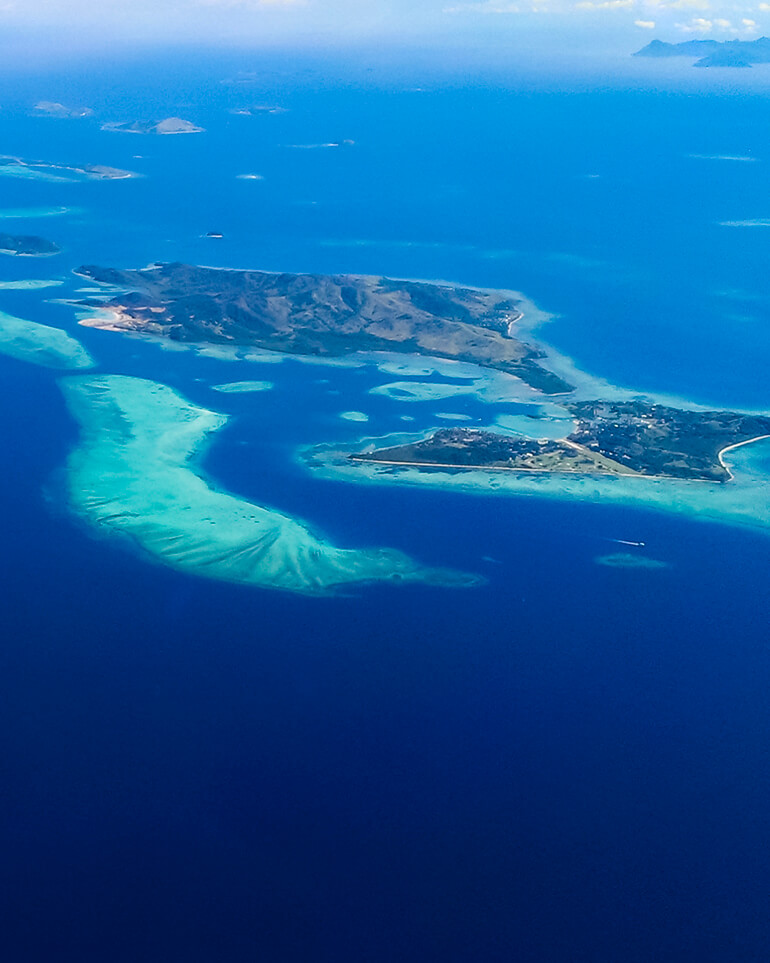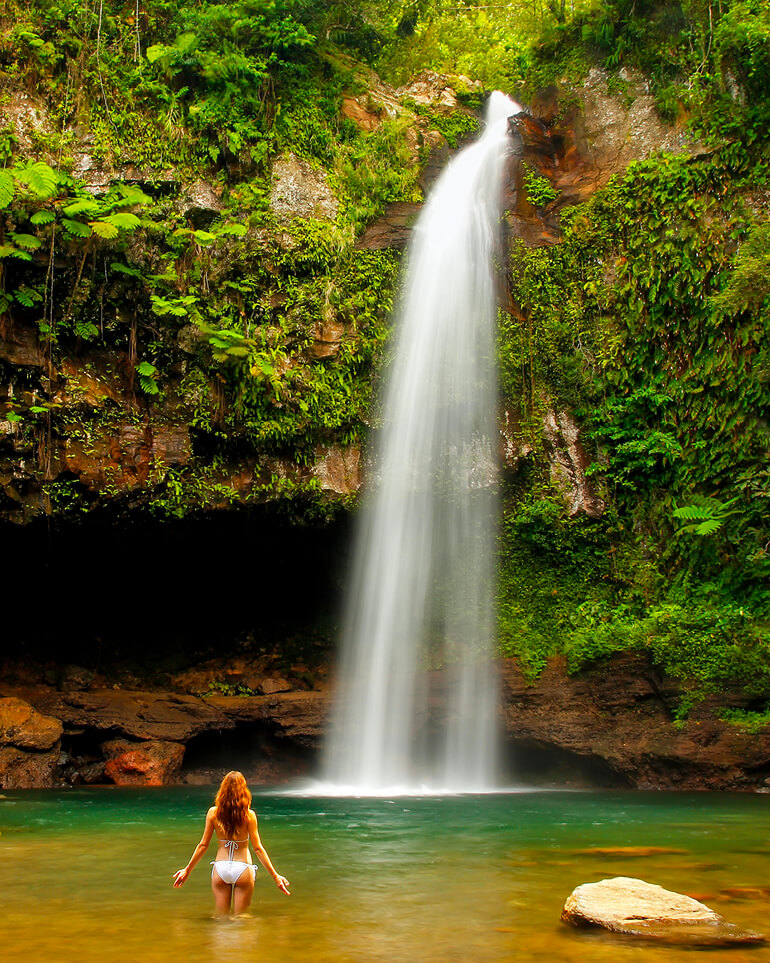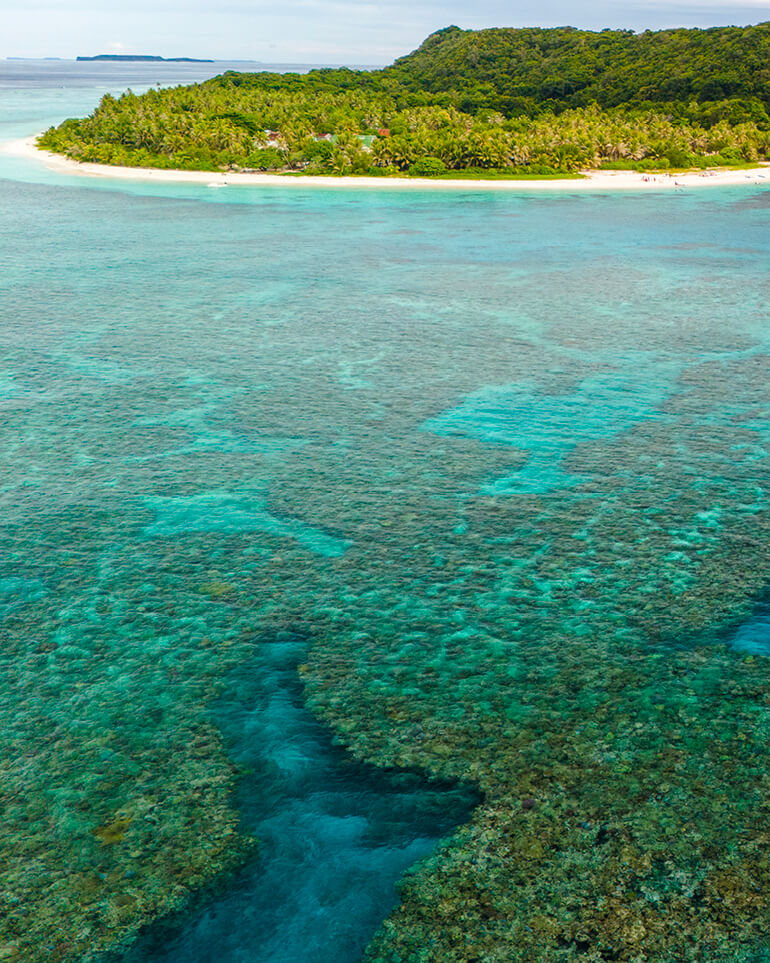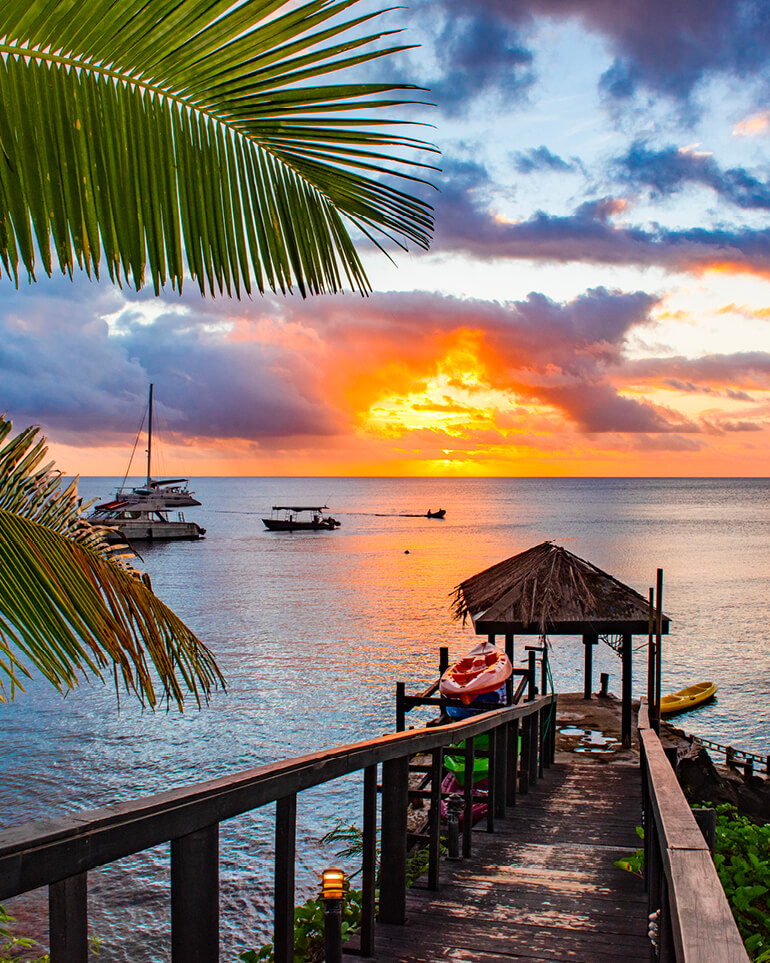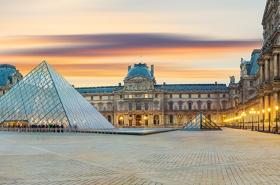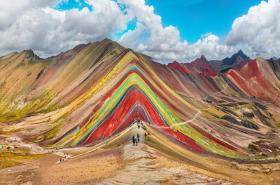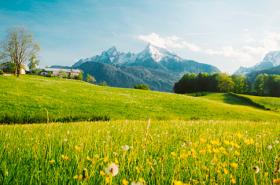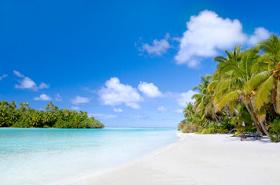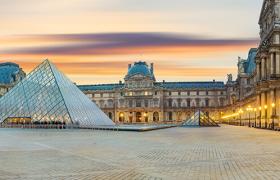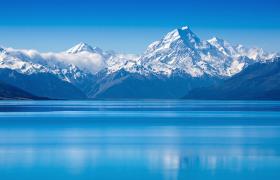Wondering how to pay for all these incredible adventures while you’re in Fiji? Here’s some insider tips from our team.
This blog is provided for information only and does not take into consideration your objectives, financial situation or needs. Travel Money Oz has sought to ensure that the information is true and correct at the time of publication (First Published July 8th, 2024). Prices, details and services are subject to change without notice, and Travel Money Oz accepts no responsibility or liability for any such changes, including any loss resulting from any action taken or reliance made by you on any information provided. You should consider whether the information and suggestions contained in any blog entry are appropriate for you, having regard to your own objectives, financial situation and needs. While we take reasonable care in providing the blog, we give no warranties or representations that it is complete or accurate or is appropriate for you. We are not liable for any loss caused, whether due to negligence or otherwise, arising from use of, or reliance on, the information and/or suggestions contained in this blog. Daily Cost: All prices are approximations. Your costs may differ depending on where you go, where you shop, and their individual factors. Daily Budget: Costs are estimated per person and do not include accommodation. Terms and conditions apply to Best Price Guarantee, Rate Guard and Cash Commitment. See travelmoneyoz.com for more details.
Let me know if you need anything else clarified.

